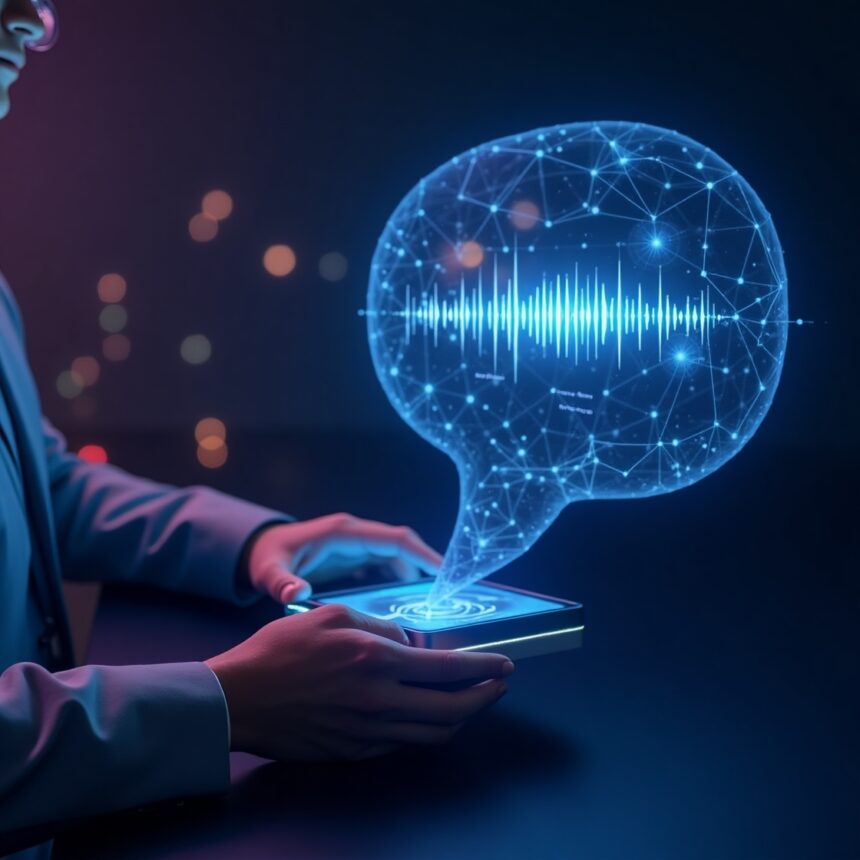The Evolution of AI in Speech Technology
Over the past two decades, artificial intelligence revolutionized how we interact with technology. One of its most incredible achievements is text-to-voice artificial intelligence technology. The technology allows computers to translate written words into human-like voices, delivering information in a more readable and engaging manner than ever. The neural networks and deep learning breakthroughs made contemporary text-to-speech systems nearly indistinguishable from actual humans.
Initially, computer-generated voices were robotic and not humanlike in tone. Previous models of speech synthesis were rule-based, which stitched together pre-recorded phonemes to construct artificial intonation and phrasing challenges. But with AI and machine learning, the transformation for the better came. Current TTS engines using AI rely on deep learning models that learn from giant databases of human speech to replicate the natural rhythm, intonation, and even mood.
Applications of AI text-to-voice technology extend way beyond voiceover. The technology has been employed to transform many sectors, enhancing access and enhancing the user experience. The greatest sector of impact is likely to be assistive technology for the blind or physically disabled readers. AI text-to-voice technology allows users to listen to written words, hence opening books, articles, and web pages without the use of visual input.
In the world of academics, AI voice is an essential learning tool. Text-to-speech technology is employed very extensively by language learners to improve pronunciation and understanding. Teachers and content creators use AI voices to prepare learning materials, audiobooks, and interactive lessons for various categories of learners. The ability to produce voices that are not different from human voices keeps students engaged and improves learning.
Businesses have also employed AI-powered voice technology to fuel customer interaction. From virtual assistants and chatbots to automated customer support hotlines, AI-powered speech makes processes more streamlined with an equally streamlined user experience. All businesses employ a free AI voice generator text to speech tool to create high-quality voiceovers for commercials, educational videos, and promotional videos at reduced cost and faster turnaround than hiring voice actors.
The Role of AI in Emotionalization and Personalization
The most astonishing aspect of AI speech synthesis is its ability to impart emotion and personalization to generated voices. Previous text-to-speech machines produced dull and mechanical speech, but modern AI frameworks look at context, tone, and word stress to produce emotive voices. With the inclusion of emotional intelligence, AI-generated voices can be upbeat, somber, or empathetic, based on the message.
Personalization is also an area where AI text-to-voice technology excels. Individuals can pick from a number of voices, tweaking pitch, speed, and even accents to personalize their experience. This level of personalization is especially valuable in media and entertainment, where artists attempt to create distinctive sound personas for characters, podcasts, and narrations. Voice customization with the choice option creates a higher level of engagement and provides a more compelling listening experience.
Enhancing Accessibility through AI-Synthesized Speech
AI-enabled text-to-speech technology has revolutionized the work of enhancing accessibility for people with disabilities. Screen readers based on TTS enable it to make digital information accessible to blind and visually impaired individuals with ease. Instead of employing braille or cumbersome manual reading assistants, they enjoy ease through synthesized speech speaking out text in real-time.
For people with speech impairments to communicate, AI voice technology offers a substitute. Using text-to-speech applications, people write messages that a human-like AI voice reads out. This technology has particularly benefited people with ALS, cerebral palsy, and autism, giving them a decent form of communication.
Apart from this, AI voice is also breaking language barriers. Multilingual speech-to-text technology allows smooth communication among people who belong to a different language. Through the text-to-speech operation in different languages, voice synthesis using AI is enhancing global connectivity and making information available to a global audience.
The Emergence of AI Voice Generation in Content Creation
AI voice generation is increasingly being utilized by digital marketers and content creators to increase their work. Audio content has become in high demand as there has been higher popularity for podcasts, audiobooks, and voiceovers of videos. All this, by conventional methods, requires recruiting expert voice artists, booking studio hours, and long editing processes. In comparison to this, solutions offered by technology based on AI are less costly and efficient.
A standalone AI voice generator text to speech application allows developers to produce outstanding voiceovers with no specialized equipment. For YouTubes, web educational tutorials, or web commercials, AI speech has delivered consistent and professional outputs. Being able to produce natural voices at demand has made things even easier for creators, making individuals and small business owners on the same level as larger production units.
Conclusion
The future of text-to-speech AI voice synthesis is highly promising. With machine learning algorithms constantly enhancing, more natural-sounding and expressive voice synthesis will be heard in the times to come. Future AI technology will bring with it more sophisticated multilingual capabilities, better emotion recognition, and higher customizability.
Read more
Who is Melanie from CraigScottCapital? A Deep Dive into Her Journey & Influence
The Ultimate Guide to sdss j123132.37 013814.1: Exploring a High-Redshift Quasar
hillsboro-deering elementary school 4 hillcat dr hillsboro nh 3244






